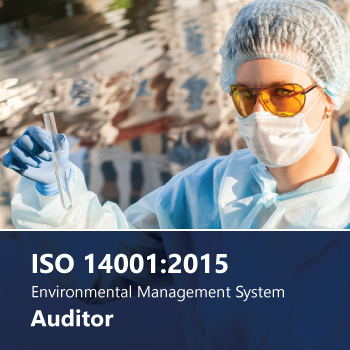The relationship between environmental aspects and impacts in the context of an environmental management system (EMS)

For any organization looking to manage its environmental responsibilities systematically, ISO 14001 is the go-to standard. ISO 14001 provides a model that can be used to establish an effective management system, helping to improve the organization’s environmental performance.
One of the key activities that should be undertaken by any organization implementing an environmental management system is to determine the environmental aspects of its activities, products, and services and their associated environmental impacts. Let’s explore the relationship between environmental aspects and impacts to see why a correct understanding of those concepts is essential for improving environmental performance.
What are environmental aspects?
An environmental aspect is an element of an organization's activities, products, or services that interacts, or can interact, with the environment. Examples of environmental aspects include:
- Generation of noise (e.g. from operating industrial equipment)
- Use of natural resources (e.g. to manufacture products)
- Generation of emissions (e.g. from chemical processes)
- Releases of wastewater (e.g. from treatment plants)
- Generation of waste.
What are environmental impacts?
Environmental impacts are changes to the environment, whether adverse or beneficial, resulting from an organization's environmental aspects. These impacts include, for example, air and water pollution, soil degradation or resource depletion. Environmental impacts can also be beneficial. For example, afforestation or habitat rehabilitation are beneficial environmental impacts.
The cause-and-effect relationship
The relationship between environmental aspects and impacts is one of cause and effect. An aspect (cause) leads to one or several impacts (effect). For example:
- Aspect: Emissions from a chemical process. Impact: Air pollution.
- Aspect: Excessive use of water from natural resources. Impact: Depletion of freshwater resources affecting ecosystems and communities.
- Aspect: Use of fossil fuels for transportation. Impact: Depletion of natural resources and air pollution.
- Aspect: Deforestation and land conversion for agriculture or urban development. Impact: Loss of biodiversity, habitat destruction, and alteration of natural landscapes.
A good understanding of the relationship between environmental aspects and impacts is important for an organization to understand the environmental consequences of its activities.
Significant environmental aspects
Those environmental aspects that have a significant impact (i.e., significant environmental aspects) shall be determined using criteria and addressed by the organization with priority. Criteria for determining which environmental aspects are significant may relate to the aspect (e.g., type, size, or frequency) or to the environmental impact (e.g., scale, severity, duration, or exposure).
However, it should be noted that significance is a concept relative to an organization and its context. What is significant for one enterprise may not be significant for another.
Learn more about ISO 14001 or prove your knowledge
If you want to know more about the requirements for an environmental management system according to ISO 14001, you can check out our online course on the subject. All our available courses are listed here.
For those who want to prove their knowledge in environmental management and gain recognition, we have an online certification process that can be accessed here.
Understanding and managing environmental aspects and impacts are fundamental to improving environmental performance. By aligning with ISO 14001, organizations can ensure they are taking significant steps towards sustainability and environmental responsibility.



